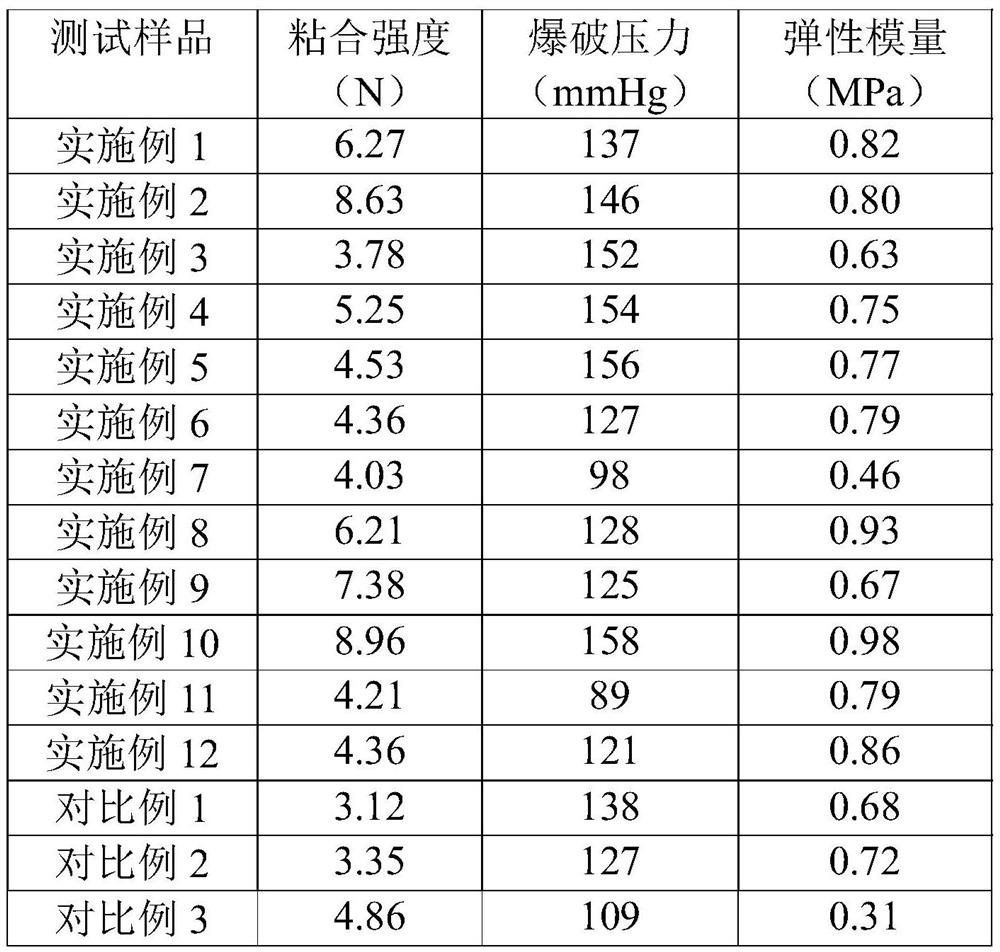Single-sided adhesion tissue adhesion patch and preparation method thereof
A tissue and patch technology, which is applied in medical formulations, surgical adhesives, operations, etc., can solve the problems of adhesives entering the blood circulation system, unstable adhesion, and hindering the development of tissue adhesive patches, so as to prevent sticking Strong bonding performance, good biocompatibility
- Summary
- Abstract
- Description
- Claims
- Application Information
AI Technical Summary
Problems solved by technology
Method used
Image
Examples
preparation example Construction
[0051] The present invention also provides a preparation method for the above-mentioned tissue adhesive patch, comprising the following preparation steps:
[0052] Prepare a mixed solution A of a zwitterionic polymer monomer and a photoinitiator, and light-initiate polymerization of the mixed solution A to obtain an anti-adhesion layer;
[0053] preparing a mixed solution B of a biocompatible polymer monomer, a toughening agent and a photoinitiator and coating it on the surface of the anti-adhesion layer, and photopolymerizing the mixed solution B to obtain a dissipation layer;
[0054] Prepare tissue-adhesive polymer matrix monomers, photoinitiator mixed solution C and apply it on the surface of the dissipative layer, and light-initiate polymerization of the mixed solution C to obtain a tissue-adhesive layer, thus completing the tissue-adhesive patch preparation.
[0055] In a specific example, the zwitterionic polymer monomer is 2-methacryloyloxyethyl phosphorylcholine, and...
Embodiment 1
[0064] 1) Preparation of anti-adhesion layer: Dissolve 2-methacryloxyethyl phosphorylcholine in deionized water to obtain a 30% (w / v) solution, add 0.1% (w / v) α-ketone Glutaric acid was then applied to a polytetrafluoroethylene mold, and placed under ultraviolet light with a wavelength of 365nm to polymerize for 5 minutes to obtain an anti-adhesion layer with a thickness of about 100 μm.
[0065] 2) Preparation of dissipative layer: Dissolve N-acryloyloxyglycine and isopropylacrylamide in deionized water to obtain mixed solutions with mass fractions of 21% and 9%, respectively, and add 0.1% (w / v) α - After ketoglutaric acid was applied to the surface of the anti-adhesion layer obtained in step 1, it was placed under ultraviolet light with a wavelength of 365 nm for 5 minutes to polymerize to obtain a 200 μm anti-adhesion layer.
[0066] 3) Preparation of tissue adhesion layer: 30% acrylic acid, 1% acrylic acid-N-succinimide ester, 0.5% four-arm polyethylene glycol amino, 0.05%...
Embodiment 2
[0069] The difference from Example 1 is that the mass percentage of the four-arm polyethylene glycol amino group in step 3) is 5%.
PUM
| Property | Measurement | Unit |
|---|---|---|
| thickness | aaaaa | aaaaa |
| thickness | aaaaa | aaaaa |
| molecular weight | aaaaa | aaaaa |
Abstract
Description
Claims
Application Information
 Login to View More
Login to View More - R&D
- Intellectual Property
- Life Sciences
- Materials
- Tech Scout
- Unparalleled Data Quality
- Higher Quality Content
- 60% Fewer Hallucinations
Browse by: Latest US Patents, China's latest patents, Technical Efficacy Thesaurus, Application Domain, Technology Topic, Popular Technical Reports.
© 2025 PatSnap. All rights reserved.Legal|Privacy policy|Modern Slavery Act Transparency Statement|Sitemap|About US| Contact US: help@patsnap.com



